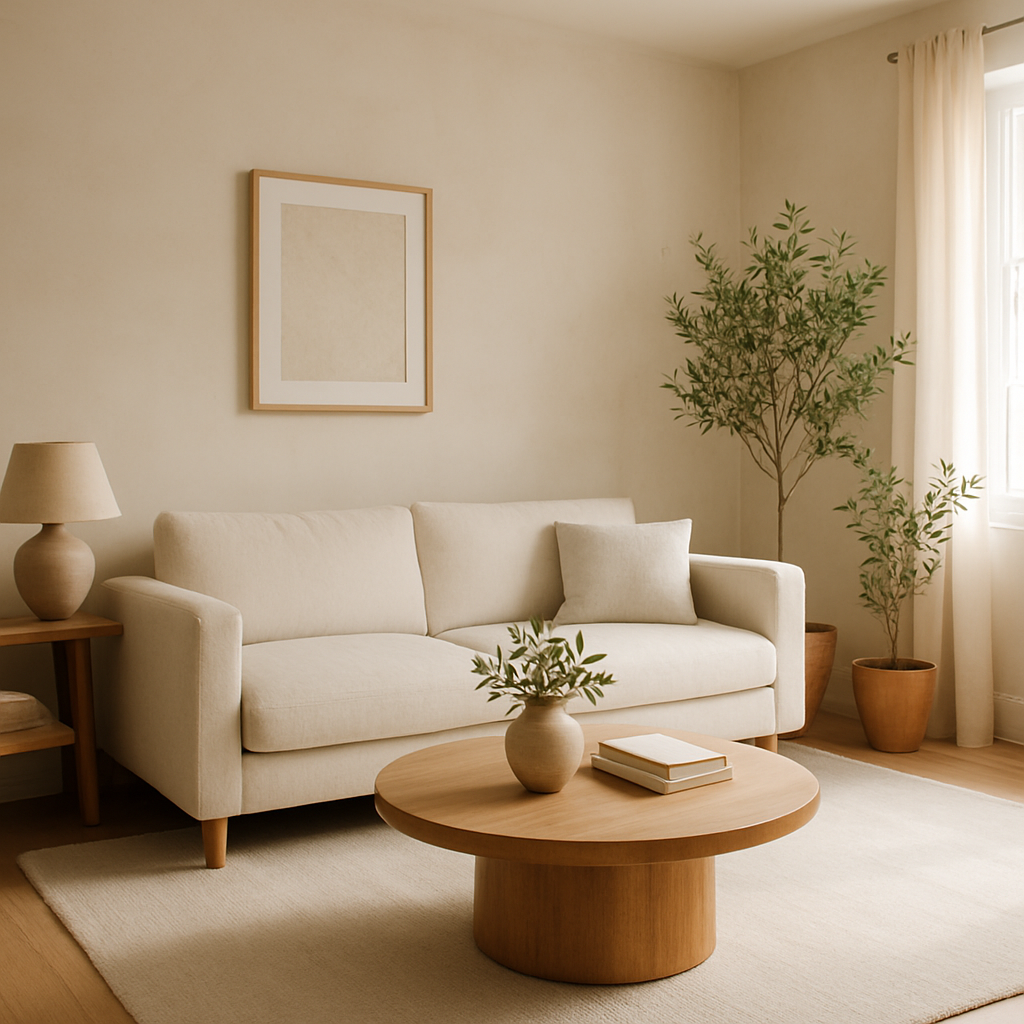Minimalist interior design is often associated with clean lines, uncluttered spaces, and a monochromatic color palette. While it’s known for its simplicity, minimalism doesn’t have to feel cold or impersonal. In fact, the right approach to minimalist design can create a space that’s both serene and warm—inviting you to breathe, relax, and focus on what matters most.
In this guide, you’ll learn how to embrace minimalist interior design while still creating a cozy and welcoming atmosphere in your home.
What Is Minimalist Interior Design?
Minimalist design is based on the idea that “less is more.” It focuses on:
- Functionality
- Clean, uncluttered spaces
- High-quality over high-quantity
- Neutral and calming color palettes
- Intentionality in choosing furniture and décor
But warmth and comfort don’t have to be sacrificed. Let’s explore how to balance simplicity and coziness.
1. Choose a Warm Neutral Color Palette
Cool whites and grays are often used in minimalist design, but warmer neutrals can make a big difference in how the space feels.
Ideas:
- Use warm beige, taupe, soft ivory, or muted terracotta.
- Try off-white walls with wooden accents for contrast.
- Add depth with different tones of the same color (e.g., sand and caramel).
These shades maintain the minimalist aesthetic while adding warmth and softness.
2. Emphasize Natural Light
One of the key principles of minimalism is letting the space breathe—and natural light helps with that.
How to Maximize It:
- Use sheer curtains or light-filtering shades.
- Avoid bulky window treatments.
- Place mirrors across from windows to reflect light.
A bright space feels airy and expansive, which aligns with minimalist values.
3. Prioritize Functionality and Flow
Minimalism isn’t about getting rid of everything—it’s about keeping what serves you.
Tips:
- Use multi-functional furniture (e.g., ottomans with storage, sofa beds).
- Keep pathways clear to promote easy movement.
- Eliminate visual clutter—only display what you truly love.
Focus on furniture and décor that improve how you live in the space, not just how it looks.
4. Layer Textures for Coziness
Without decorative clutter, texture becomes essential for warmth and visual interest.
Examples:
- Linen or cotton curtains
- Woven baskets for storage
- Wool throws or rugs
- Natural wood furniture with visible grain
The mix of textures adds depth without breaking the minimalist tone.
5. Select a Few Meaningful Décor Pieces
Instead of shelves filled with knick-knacks, choose a handful of items that tell a story.
Ideas:
- A ceramic vase from a trip
- A framed photo or art print you love
- A handmade bowl or sculpture
When each object has purpose or personal value, the space feels curated rather than empty.
6. Keep Surfaces Clean but Not Empty
Minimalism isn’t about sterile surfaces—it’s about intentional surfaces.
Balance It:
- Place a small plant and a book stack on your coffee table.
- Add a candle and a tray to your sideboard.
- Use floating shelves with one or two curated items per section.
This keeps things visually clean but far from boring.
7. Use Plants for a Soft Natural Touch
Greenery introduces color and life without overwhelming the space.
Good Plant Choices:
- Snake plant or ZZ plant for sleek shapes
- Olive tree for Mediterranean warmth
- Small succulents or air plants for subtle detail
Keep planters simple and in tones that match the overall palette.
8. Stick to Quality Over Quantity
Invest in fewer but better-made pieces that will last and elevate the space.
How to Choose:
- Focus on timeless shapes and durable materials.
- Avoid trendy items that might feel out of place in a year.
- Look for clean lines, subtle textures, and expert craftsmanship.
This principle extends to everything—from furniture to lighting to accessories.
9. Add Soft Lighting
Harsh overhead lights can ruin the cozy vibe. Instead, layer warm lighting to enhance ambiance.
Lighting Tips:
- Use warm LED bulbs (2700K–3000K).
- Include floor lamps, table lamps, or wall sconces.
- Candles or lanterns work beautifully in minimalist settings.
The right lighting instantly makes a room feel more intimate and comfortable.
10. Embrace Negative Space
One of the defining traits of minimalism is the use of negative space—areas with nothing in them.
Why It Works:
- It creates visual breathing room.
- It highlights the pieces you do have.
- It encourages calm and mental clarity.
Don’t rush to fill every wall or corner. Sometimes, the empty space is what gives a room its elegance.
Minimalism That Feels Like Home
Minimalist interior design isn’t about creating a space that looks like a showroom—it’s about designing a home that supports peace, intention, and comfort. When you combine clean simplicity with warmth and character, you get a living environment that nourishes both body and mind.
So start small. Remove what no longer serves you, choose elements with purpose, and make room for what truly matters. Your minimalist sanctuary is closer than you think.
